 W
WAush jushpare is a type of aush, commonly cooked in Khorasan, Gonabad, Ferdous and Sabzevar in Iran. It is similar to the Chinese Jiaozi Historian Bayhaqi (-1077) mentioned about Aush Jushpare in his book "Tarikh-i Bayhaqi". Aush Jushpare is one of the oldest Aush, but since it takes a lot of time for preparation, it is not commonly eaten now. It is rather a dish of hospitality, which people eat on the occasion of special gatherings or festivals. Traditional guest house restaurant serves Aush Jushpare as local specialty. Aush Jushpare was registered as intangible heritage of Iran on 5 January 2021.
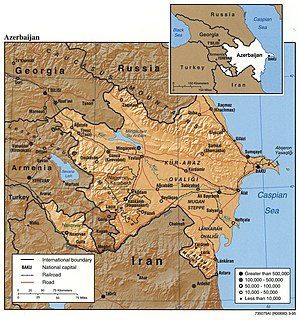 W
WAzerbaijani wine is produced in several regions throughout Azerbaijan. Prior to 20th century communist rule, Azerbaijan had a thriving wine industry that dated back to the second millennium BC. Azerbaijan's long history of wine production was rediscovered at archaeological digs of settlements in Kültəpə, Qarabağlar and Galajig where archaeologists discovered stone fermentation and storage vessels that included residue and grape seeds dating back to the second millennium BC. The Ancient Greeks were well aware of wine production in the area by at least the 7th century BC according to Herodotus. Later Strabo would comment in the 1st century BC about an Azerbaijani wine known as Albania. Arabic historians and geographers—most notably Abu'l-Fida, Al-Masudi, Ibn Hawqal and Al-Muqaddasi - described the extensive viticulture around Ganja and Barda that was taking place even after Islamic conquest of the area.
 W
WBaklava is a layered pastry dessert made of filo pastry, filled with chopped nuts, and sweetened with syrup or honey. It was one of the most popular sweet pastries of Ottoman cuisine.
 W
WBeer in Azerbaijan is typified by lighter lagers. Of the domestically produced beers, the most widely distributed is Xirdalan, formerly brewed by Baki-Castel (BGI) but bought by Baltika in 2008. As a sponsor of Baku's Eurovision Song Contest, Xirdalan issued special commemorative Eurovision cans and bottles in 2012. Other relatively widespread brands include Novxanı and NZS. Beer drinking is growing in popularity in Azerbaijan. Unlike almost all CIS countries, the beer bottles in Azerbaijan are marked with excise duty sticker.
 W
WBonab kabab is a type of kebab that is made of ground mutton, onion, and salt. It is named after the city of Bonab in the region of Azerbaijan in northwestern Iran, where it is originated from, and is famous for its large size.
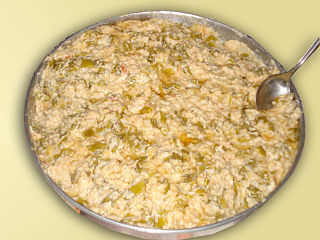 W
WBorani is a salad dish from Iranian cuisine. It is also found in Turkish cuisine where it is associated with certain provinces like Isparta, Urfa and Van. Some versions are made with spinach and yogurt, while the Ancient Persian borani was made with eggplant, and a regional version from Urfa is made with lamb and vegetarian meatballs. Borani is also popular in the Caucasus and Afghanistan.
 W
WA cabbage roll is a dish consisting of cooked cabbage leaves wrapped around a variety of fillings. It is common to the cuisines of Central, Northern, Eastern and Southeastern Europe and much of Western Asia, Northern China, as well as parts of North Africa. Meat fillings are traditional in Europe, and include beef, lamb, or pork seasoned with garlic, onion, and spices. Grains such as rice and barley, mushrooms, and vegetables are often included as well. Fermented cabbage leaves are used for wrapping, particularly in southeastern Europe. In Asia, seafoods, tofu, and shiitake mushrooms may also be used. Chinese cabbage is often used as a wrapping.
 W
WCaviar is a food consisting of salt-cured roe of the family Acipenseridae. Caviar is considered a delicacy and is eaten as a garnish or a spread. Traditionally, the term caviar refers only to roe from wild sturgeon in the Caspian Sea and Black Sea. Depending on the country, caviar may also be used to describe the roe of other species of sturgeon or other fish such as salmon, steelhead, trout, lumpfish, whitefish, or carp.
 W
WChebureki is a deep-fried turnover with a filling of ground or minced meat and onions. It is made with a single round piece of dough folded over the filling in a crescent shape.
 W
WChigirtma is an egg dish from Azerbaijan. The word chigirtma (çığırtma) in the name of the dish means that it includes eggs. Chigirtma literally means in Azerbaijani “screaming”. It is believed that the dish is called so because of the sounds the meat makes while cooking in hot oil. Chigirtma is made from chicken, eggplants, green beans, spinach and mutton.
 W
WDolma is a family of stuffed dishes from Ottoman cuisine that can be served warm or cold. Some types of dolma are made with whole vegetables, fruit, offal or seafood, while others are made by wrapping leaves, most commonly grape or cabbage leaves, around the filling. Wrapped dolma, specifically, are also known as sarma.
 W
WDoymenj or doymaj is a snack food of Azerbaijan, made of crushed cherries with herbs and salt. It is common in the northwestern zone of Azerbaijan.
 W
WEggplant jam is a whole-fruit jam from the Azerbaijani and Turkish cuisines. In Turkey, it is especially popular in Antalya, Iğdır and Kağızman. The Governorate of Iğdır Province is making efforts to obtain a geographical indication for the name "patlıcan reçeli".
 W
WFesenjān is an Iranian stew from Northern Iran. It is also eaten in the Republic of Azerbaijan.
 W
WGürzə is a variation of Azerbaijani dumplings consisting of a filling wrapped in 1mm thin dough circle cuts of 5 cm diameter. It originates in Azerbaijan and is a part of Azerbaijan national cuisine. The filling is made from minced fatty lamb and onion, pre-fried before filling. Gürzə are formed as small cylinders with an open top, boiled for several minutes, strained, seasoned with cinnamon and served with yogurt or sour cream mixed with crushed garlic. In some regions of Azerbaijan gürzə dumplings are boiled in lamb stock and served as a soup, seasoned with chopped fresh parsley and served with vinegar mix and crushed garlic. The name "Gürzə" is associated with Azerbaijani name for "Caucasian meadow viper" and given due to the wrapper sealing technique, which resembles cornrow pattern on the skin of Caucasian meadow viper.
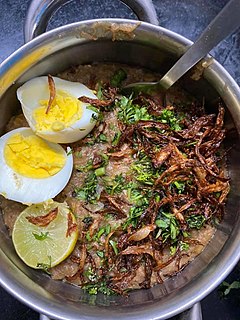 W
WHaleem is a type of stew popular in the Middle East, Central Asia, the Indian subcontinent. Although the dish varies from region to region, it optionally includes wheat or barley, meat and lentils. Popular variations include keşkek in Turkey, Iran, Afghanistan, Tajikistan, Uzbekistan, Azerbaijan and northern Iraq; hareesa in the Arab world and Armenia; Halim in Bangladesh and West Bengal, India; khichra in Pakistan and India.
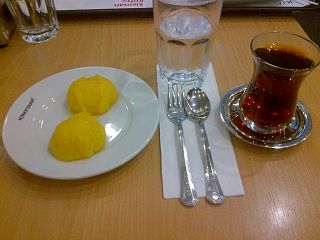 W
WHöşmerim or hoşmerim is a Turkish dessert popular in the Aegean, Marmara, Trakya and Central Anatolia regions of Turkey. It is sometimes called peynir helva or "cheese halva". It is generally consumed after a meal as a light dessert and may be topped with ice cream, honey or nuts.
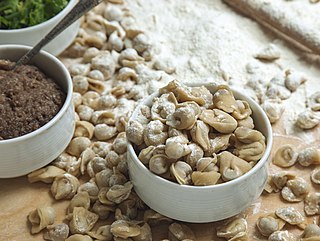 W
WJoshpara is a kind of dumplings popular in Central Asia, South Caucasus and the Middle East. They are made of unleavened wheat dough squares filled with ground meat and condiments. In observance of the Islamic dietary rules, the meat filling is usually without pork.
 W
WKashk or qurut is a range of dairy products used in cuisines of Iranian, Afghan, Turkish, Kurdish, Mongolian, Central Asian, Transcaucasian and the Levantine people. Kashk is made from drained yogurt or drained sour milk by shaping it and letting it dry. It can be made in a variety of forms, like rolled into balls, sliced into strips, and formed into chunks.
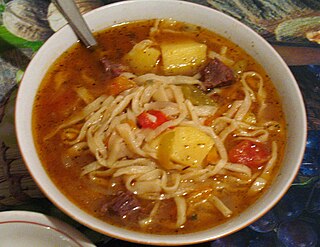 W
WKesme or erişte is a type of egg noodle found in various Turkic countries, Iran and Afghanistan. It is also found in Turkish cuisine and is called erişte and “kesme” in modern standard Turkish. The word itself is a nominalisation of the verb to cut or to slice, referring to the slicing of the dough involved in preparing the noodles. The term may refer to the noodles themselves, or the prepared dish made with them. Kesme is traditionally a homemade dish, and not often found at restaurants or cafés. In Turkey, kesme is also known as "erişte", and eaten generally in winter. It is made from flour, egg, water, salt and milk. These ingredients are worked into a dough, which is rolled out, cut, and dried in the sun or an oven after dried for a day.
 W
WKhash is a dish of boiled cow or sheep parts, which might include the head, feet, and stomach (tripe).
 W
WKol böreği is a Turkish puff pastry prepared in long rolls, traditionally filled with cheese, potatoes, spinach, or meat, and baked at a low temperature. They are named after their long arm-like appearance.
 W
WKömbe is a kind of börek from [[Sivas, Malatya Province Turkey. It exists in both the cuisine of Turkey and that of Azerbaijan and is popular among both Turkish and Azerbaijani people.
 W
WKuku, also spelled as kookoo, is an egg-based and often vegetarian Iranian dish made of whipped eggs folded in various ingredients. It is similar to the Italian frittata, the French quiche, or an open-faced omelette, but it typically has less egg than a frittata, and it cooks for a shorter amount of time, over a low heat, before turned over or grilled briefly to set the top layer. It is served either hot or cold as a starter, side dish or a main course, and is accompanied with bread and either yogurt or salad. In parts of northern Iran, kuku might be used as a midday meal, and might be served with either plain cooked rice (kate) or bread.
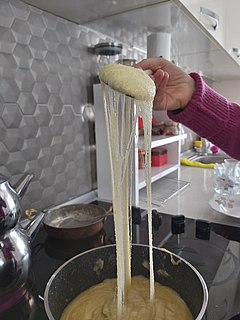 W
WKuymak or Kachi is an Iranian dessert. Its primary ingredients are corn meal and cheese.Liljegren, Katherine. "1 foods you have to try in Turkey's Black Sea region". Matadornetwork.com, Feb 04, 2016. Retrieved Feb 1, 2020.</ref> It is also popular in Georgia, Azerbaijan and some regions of Caucasus.
 W
WLavash is a thin flatbread usually leavened, traditionally baked in a tandoor (tonir) or on a sajj, and common to the cuisines of South Caucasus, Western Asia, and the areas surrounding the Caspian Sea. Lavash is one of the most widespread types of bread in Armenia, Azerbaijan, Iran and Turkey. The traditional recipe can be adapted to the modern kitchen by using a griddle or wok instead of the tonir.
 W
WLevengi or Lavangi is a national dish of Azerbaijan and features in Talysh, Azerbaijani and Iranian cuisine. It is a fish or chicken stuffed with walnuts, onions and various condiments and baked in the oven. Lavangi is most prevalent in the Absheron Peninsula of Azerbaijan and in the Lankaran, Lerik, Astara, Masally, Salyan and Neftchala districts. Lavangi is prepared from fish, chicken, duck and aubergine.
 W
WNan-o kabab is a national dish of Iran. The meal is simple, consisting of kabab, of which there are several Iranian varieties, and a type of Iranian flat bread. It is served everywhere throughout Iran today, but traditionally was associated with the southern and central parts of the country, and probably originated in the province of Fars.
 W
WPomegranate juice is made from the fruit of the pomegranate. It is used in cooking both as a fresh juice and as a concentrated syrup.
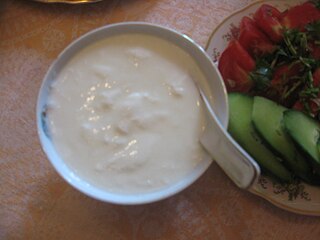 W
WQatiq is a fermented milk product from the Turkic countries. It is considered a more solid form of yogurt than ayran.
 W
WKattama, katlama, katmer, or gambir is a fried layered bread common in the cuisines of Central Asia. Qatlama in traditional Turkish means "folded", which comes from the verb qatlamaq "to fold", likely referring to the traditional method of preparation. The Turkish variety katmer is made as a dessert with kaymak and like many other delicacies from Gaziantep, is also filled and topped with pistachios.
 W
WQutab is an Azerbaijani dish made from thinly rolled dough that is cooked briefly on a convex griddle known as saj.
 W
WRose water is a flavoured water made by steeping rose petals in water. Additionally, it is the hydrosol portion of the distillate of rose petals, a by-product of the production of rose oil for use in perfume. Rose water is also used to flavour food, as a component in some cosmetic and medical preparations, and for religious purposes throughout Asia and Europe.
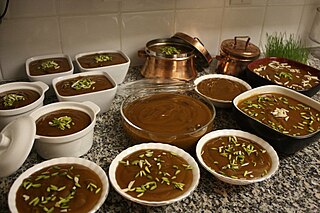 W
WSamanu, Samanak, Sümelek Sumanak ; Sumalak Uzbek: sumalak [sʉmælˈæk]) or Sümölök is a sweet paste made entirely from germinated wheat, which is prepared especially for Nowruz in a large pot. This practice has been traced back to the pre-Islamic Sasanian Persian Empire. Although Samanu is prominent for "Haft-Sin", the preparation "mela" and eating it is traditional in Afghanistan.
 W
WSarma, commonly marketed as stuffed grape leaves, is a type of dolma—a stuffed dish of the cuisines of the former Ottoman Empire from the Middle East to Southeastern Europe—comprising grapevine, cabbage, monk's rhubarb, kale or chard leaves rolled around a filling of grains, minced meat, or both.
 W
WShashlik, or shashlyk, is a dish of skewered and grilled cubes of meat, similar to or synonymous with shish kebab. It is known traditionally by various other names in the Caucasus and Central Asia, and from the 19th century became popular as shashlik across much of the Russian Empire and nowadays in the Russian Federation and former Soviet republics.
 W
WShekerbura, is an Azerbaijani dessert. It is a sweet pastry in half-moon shape, filled with ground almonds, hazelnuts, or walnuts, and sugar. Shekerbura, shorgoghal, and pakhlava are the iconic foods of Novruz holiday in Azerbaijan.
 W
WSheki halva or pakhlava is a type of dessert specific to Sheki region of Azerbaijan.
 W
WShish taouk is a traditional marinated chicken shish kebab of Ottoman cuisine that later became part of Middle Eastern cuisine. It is widely eaten in the Middle East and Caucasus. A similar dish in Persian cuisine is the traditional jujeh kabab. It is also served in kebab houses in many cities around the world.
 W
WShollar water is bottled water from the Shollar spring in Şollar, Azerbaijan, or water pumped to the city of Baku from the Shollar spring.
 W
WShorgoghal is a traditional Azerbaijani pastry in a round shape filled with anise, cumin, cinnamon, turmeric, salt and pepper. It is mainly prepared for Novruz in Azerbaijan along with pakhlava and shekerbura.
 W
WShish kofta (Turkish) is a type of kebab-style kofta dish in Turkish cuisine.
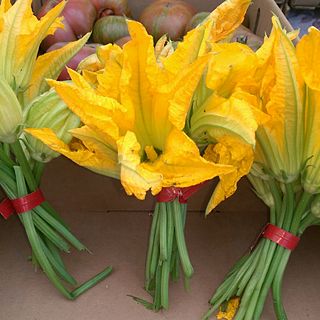 W
WSquash blossoms are the edible flowers of Cucurbita species, particularly Cucurbita pepo, the species that produces zucchini (courgette), marrow, spaghetti squash, and many other types of squash.
 W
WStuffed apples are made of apples stuffed with meat (lamb) and rice. The ingredients typically include green apples, minced meat, rice, onion, tomato paste, parsley, mint, cinnamon, salt, black pepper, and vegetable oil.
 W
WStuffed quinces are made of quinces stuffed with meat (lamb) and rice. The ingredients are ground meat, rice, quince, grape molasses, coriander, salt, and warm water.
 W
WStuffed tomatoes are one of a number of dishes in which tomatoes are filled with ingredients, usually including rice.
 W
WSujuk or sucuk is a dry, spicy and fermented sausage which is consumed in several Balkan, Middle Eastern and Central Asian cuisines. Sujuk mainly consists of ground meat and animal fat usually obtained from beef or lamb, but horse meat is also often used in Bulgaria, Kazakhstan and Kyrgyzstan.
 W
WTabriz meatballs, also known as Tabriz Köftesi, is an Iranian meatball recipe from the city of Tabriz. The dish normally includes a big meat ball with meat, rice, yellow split peas, herbs and other ingredients and its juice which is served in a separate dish with shredded Sangak or Lavash bread before the main course.
 W
WTabrizi Lovuez are diamond-shaped confectioneries from Tabriz, a provincial capital in Northwest of Iran. Its main ingredients are sugar, almond powder, and saffron.
 W
WA tahini roll or tahini bread roll is a sweet pastry found commonly in the cuisines of Armenia as Թահինով Հաց; Cyprus and Greece as ταχινόπιττα or τασιηνόπιττα; Turkey as tahinli çörek; and in Arab cuisine as khubz tahini. They are a popular street food in Cyprus.
 W
WA tandoor also known as tannour is predominantly a cylindrical clay or metal oven used in cooking and baking. The tandoor is used for cooking in Southern, Central, and Western Asia, as well as in the South Caucasus.
 W
WTorshi are the pickled vegetables of many Middle Eastern and Balkan cuisines.
 W
WTsoureki also known as شوريك (Arabic), choreg or "chorek", çörək (Azerbaijani), çyrek (Albanian), kozunak, cozonac (Romanian) or paskalya çöreği (Turkish) is a sweet holiday bread made with flour, milk, butter and sugar and commonly seasoned with orange zest, mastic resin or mahlab. One variation commonly called "Easter bread" is made by Greek communities during Easter, not only in Greece, but also in other countries with Greek communities. It is also sometimes called Armenian Easter bread.
 W
WYakhni, yahni (Turkish), or yahniya is a class of dishes prepared in a vast area from South Asia to the Balkans.
 W
WZalabiyeh also known as Mutabaqa is a fritter or doughnut found in several cuisines across the Middle East and West Asia. The fritter version, similar to jalebi and funnel cake, is made from a semi-thin batter of wheat flour which is poured into hot oil and deep-fried. The earliest known recipe for the dish comes from a 10th-century Arabic cookbook and is made by pouring the batter through a coconut shell. Zalabiyeh is also the Arabic language term used by Mizrahi Jews for a deep-fried yeast dough, often topped with either honey or syrup, and known as burmuelos in Ladino.